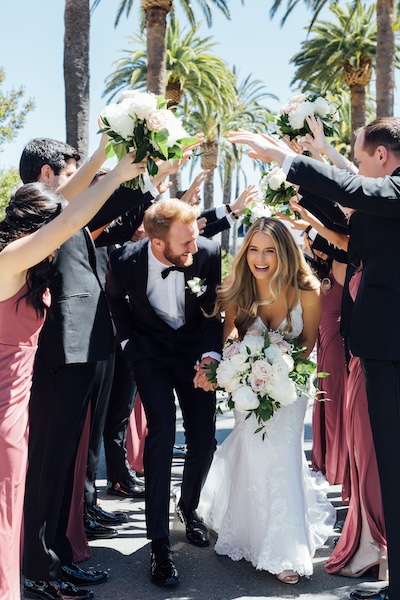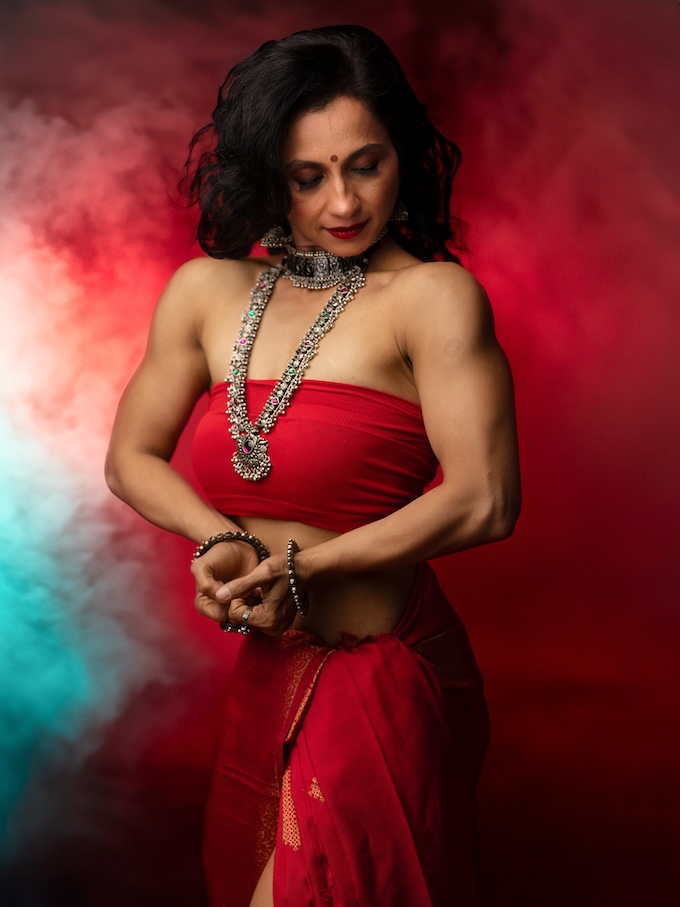How to Help Your Clients Prioritize Wedding Photography
May 20, 2016
Since our clients trust us to create our best work, we need to help them create the circumstances for this to happen. In addition to Skype calls, chats over coffee and building a friendship with my clients, one thing that has proven very helpful is sending them an info packet that I put together to help them in the planning process so they know the best scenarios and what to expect.
Keep in mind that we all work differently, and we might have slightly different preferences for each of the topics, so I suggest you write up your own guide, taking into consideration the way you work best. What follows is how I broach these subjects with my clients.

“Even candid moments can be lit well and shot with intention. The girls asked me for a group shot so I just told them to pile on the bed and to give the bride compliments, and this cute moment happened.” All photos © Katch Silva
GETTING READY
There is such great energy and happy anticipation in getting-ready moments, but this excitement can be ruined by atmosphere. A cluttered, messy, dark room takes away from the beauty of the occasion, and it distracts from our ability to create freely. Here are some things to keep in mind:
1. Typical hotel rooms don’t provide the best light or setting for prep. I usually recommend looking into non-hotel options, like a well-lit Airbnb or vacation home rental. There are tons of affordable and stylish ones out there!
2. Clutter should be kept hidden. Make sure bags, suitcases, laundry, etc. are moved into a different room, or the closet.
3. Window light is most ideal. Encourage your couple to get ready in a room with lots of window light, where lamps or artificial light won’t be necessary. Having an orange tungsten light mixed in with the window light will make your job tougher in post-processing.
4. The location of hair and makeup affects you, too. Chances are the hair and makeup artist will choose to be by the window anyways, but if not, make the suggestion. It will benefit both of you.
5. Don’t forget the groom! Often the groom and his groomsmen are stuck with the tiny, dark room, so remind your couples that they are equally important!

“Turning lights off and relying only on window light is my favorite way to shoot during prep. The window here added a great frame for the shot, too!”
Tip: Build Tension. Take a few portraits of the bride alone, after getting ready and just before she leaves to meet her groom. It allows her a few minutes to breathe and relax, and can result in powerful shots.
FIRST LOOK
I like to keep first looks simple. Reassuring the couple that we won’t make a big, staged moment, but rather an intimate and real one, always makes them feel better going into it. I give my couples these three reasons to go for a first look:
1. It calms the nerves. There is nothing that relaxes nervous couples more than finally seeing each other and enjoying a few moments alone before the official events begin.
2. It gives them time to be real. They can share what they’re feeling, hug and actually say, “Wow, you look incredible,” everything they can’t really say at the altar with everyone watching.
3. It makes the timeline easier to work with. Family and bridal party portraits can happen before the ceremony, so all guests can enjoy the full cocktail hour while we do couple portraits. This means the couple misses less of the cocktail hour, too.
Tip: Take a step back. At the beginning of the first look, I step way back and give the couple a few minutes alone, shooting from farther away with my 85mm lens. They know this ahead of time so they can freely relax and be themselves, sharing their thoughts and their excitement in a more private setting than if I were up close with my 35mm.
GROUP PORTRAITS
Family portraits, while not the most creative time of the day, are very important to your clients. I always encourage couples to keep the list short, with only the nuclear family and bridal party involved, because smiling posed at the camera with tons of different groups will get tiring. I like to do them as quickly as possible. I’m often done in just 5 to 10 minutes, but I always recommend they allot more time just in case. The best time for family and bridal party portraits is before the ceremony. Everyone is ready to go and no one will miss the cocktail hour. It’s possible to do portraits after the ceremony, but gathering everyone then is always a difficult and time-consuming task.
Tip: Make a list with your couple well before the wedding day so you don’t miss anyone important. If it’s a big list, ask your couple to delegate the job of gathering people to a bridesmaid or groomsman. This speeds up the process, makes your job easier and takes the stress off of the couple. Also, plan ahead! For group portraits, make a list with your couple well before the wedding day. If it’s a big list, ask your couple to delegate the job of gathering people to a bridesmaid or groomsman. This speeds up the process and takes the stress off of the couple.
BRIDE AND GROOM PORTRAITS
I’ve done weddings where I have 2 hours allotted for portraits, and others with only 10 minutes to spare because of schedule delays. It’s our job to get the best shots even when the timeline is running behind. The best thing to do is to communicate the ideal situation to your couple.
I recommend two time slots for couple portraits: right after the ceremony for 20 minutes and at sunset for 20 minutes. Why after the ceremony? Because the pressure is off, and they’re ecstatic, giddy, in love and ready to party. I’ve gotten some of the best, most genuine joyful moments at this time. Why before sunset? Because it’s amazing light. The sunset will give us great golden light, and right after the sun disappears comes some of my favorite moody light. If the ceremony is later in the day, close to sunset, I just merge them into one session, for about 30 minutes total.
Tip: Trust and communication are essential to ensuring great couple portraits. Before I step in and direct, I remind them of what we’re doing and what to expect from the next 20 minutes. This builds trust and eases even the most photo-nervous brides and grooms.

“In this Anghiari, Italy, wedding overlooking the Tuscan hills, the sun was behind them to the right. It provided great light for the ceremony and for this lovely exit.”
CEREMONY LIGHT
Since we’re not always going to be shooting an intimate ceremony at sunset on a mountaintop, the best thing is to educate our couples on best ceremony practices, especially light. Tell them how important the sun is. Make sure they know that spotty sunlight and harsh, uneven light are not ideal, and that in harsh light, backlighting is best. You might even suggest that they visit the ceremony site at the exact time their ceremony will take place (don’t forget to account for daylight savings!) and have them send you photos. Then you can advise them in more detail as to where to place what.
Tip: The toughest ceremony light is when one person is in dark shadow and the other is in direct sun. In this case, err on under-exposing the person in shade—it’s easier to bring darks up in post than to recover blown-out highlights.
RECEPTION LIGHTING
I very rarely use flash for anything other than dance floor shots, even if it means cranking up my ISO (usually up to 6400) and embracing that gritty mood. Since our couples are most likely not thinking about how much light we need in dark situations, it’s worth mentioning. I tell my couples that while dim lighting can be romantic, it isn’t ideal for photos. And while colorful, flashy DJ lights might be fun for party time, they can destroy the mood during special dances. If your couple plans on having colorful lights, it’s a good idea to ask that they be turned off for special dances—trying to edit a purple bride slow-dancing with a green groom will be a nightmare.
UNPLUGGING OR NOT
Opinions on this span a large spectrum, but for the way I like to document, having guests taking photos isn’t a huge concern. Maybe I’ve gotten lucky, or maybe guests are intimated by my large size (just kidding, I’m really small). To be honest, I love getting shots of Uncle Bob with his fancy DSLR and of Grandma with her iPad. These photos are honest and they can be humorous, capturing the quirks and personalities of the couple’s loved ones.
That said, I do believe there is value in asking guests to put technology away so they can truly enjoy being in the moment, without fussing with cell phones and flashes, so I typically share the pros and cons of having an unplugged ceremony and let the couple decide. Whether they go unplugged or not, I do recommend that guests stay out of the aisle and take photos from their own seat. Since most adults (and some children) are taller than me, anyone in the aisle would definitely obscure my view of the couple. Obviously if you strongly prefer your couple to have an entirely unplugged ceremony, let them know that! We all work differently, and that’s okay.
Tip: Move around whenever possible during the ceremony. Shoot the parents watching their kids get married, the flower girl fidgeting or the family dog napping. These little things go unnoticed by the couple, and they will love seeing these moments they missed afterwards.
Katch Silva is a wedding, editorial and adventure photographer. Based in Southern California, she was named an Rf 30 Rising Star of Wedding Photography in 2015.
Related: Destination: A Germany “Landhaus” Wedding by Katch Silva [RF’s Wedding of the Week]
Rangefinder Reveals the Coveted List of Full and Online Gallery of 30 Rising Stars of 2015!




